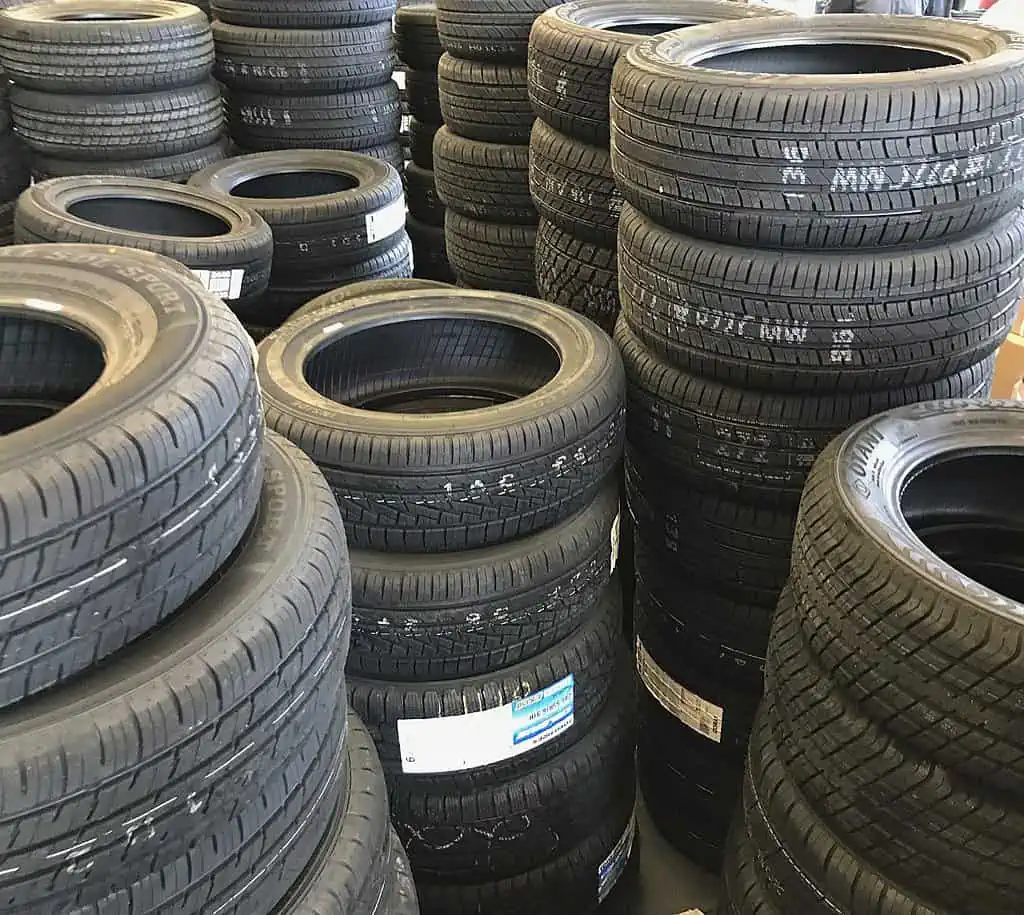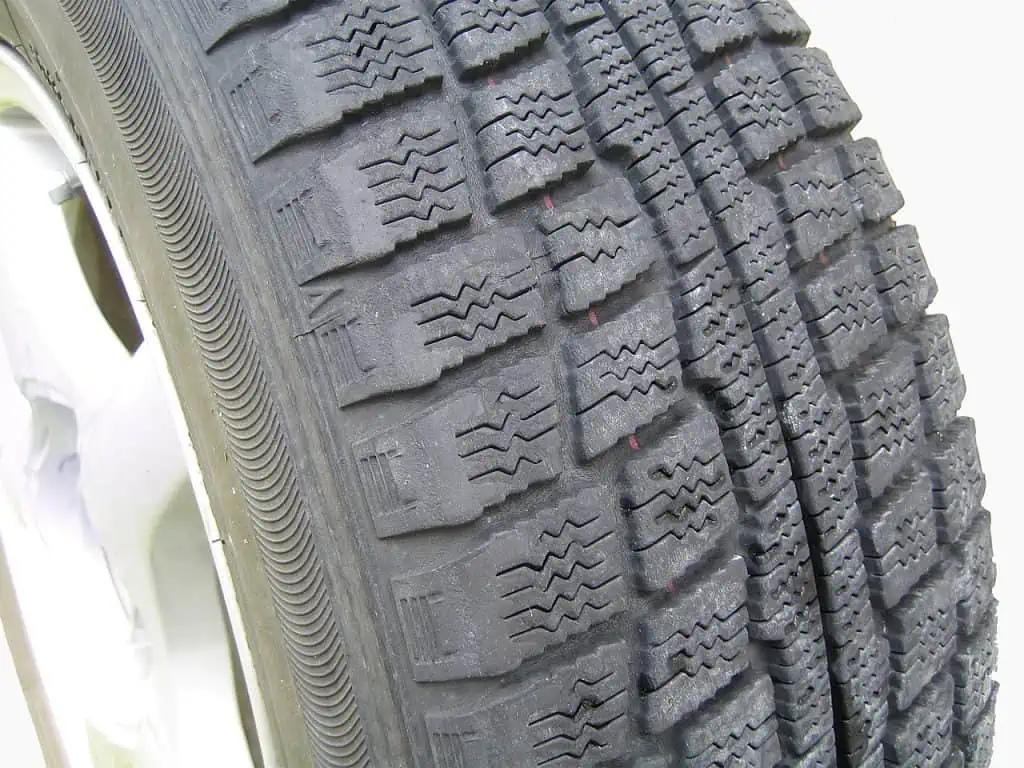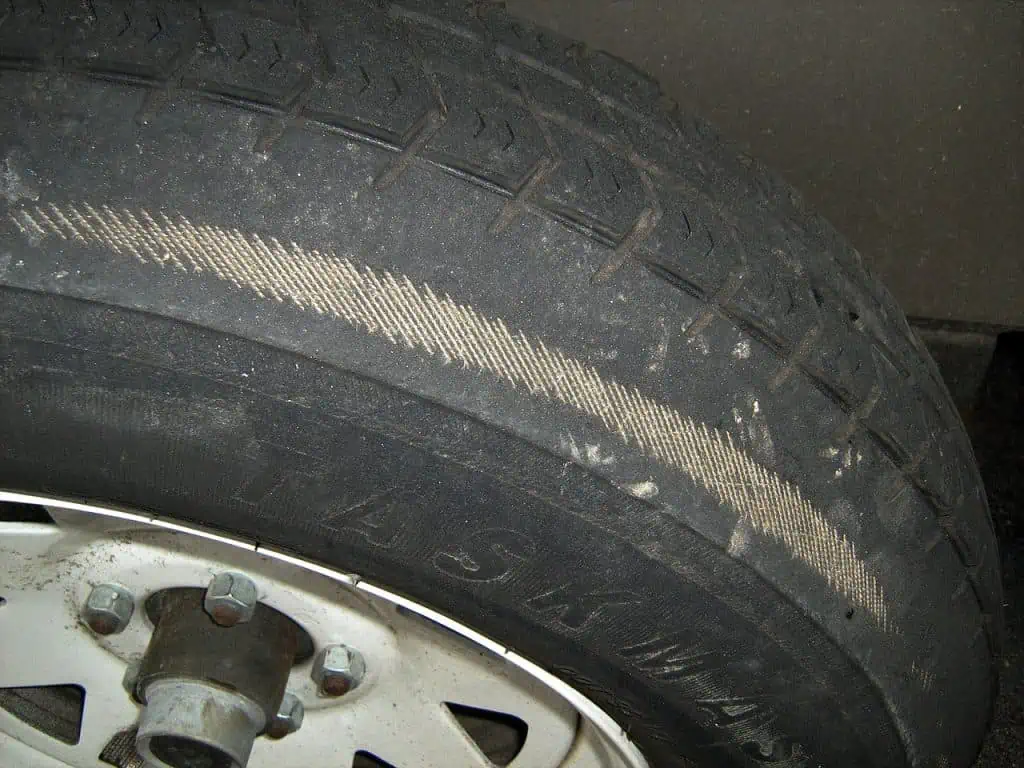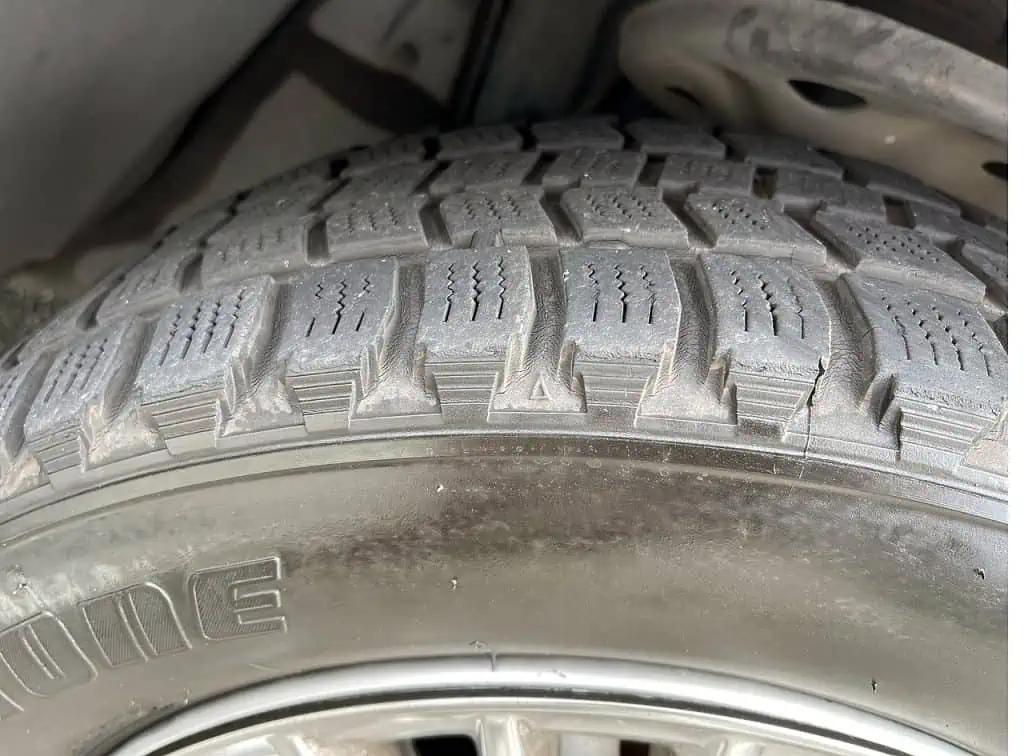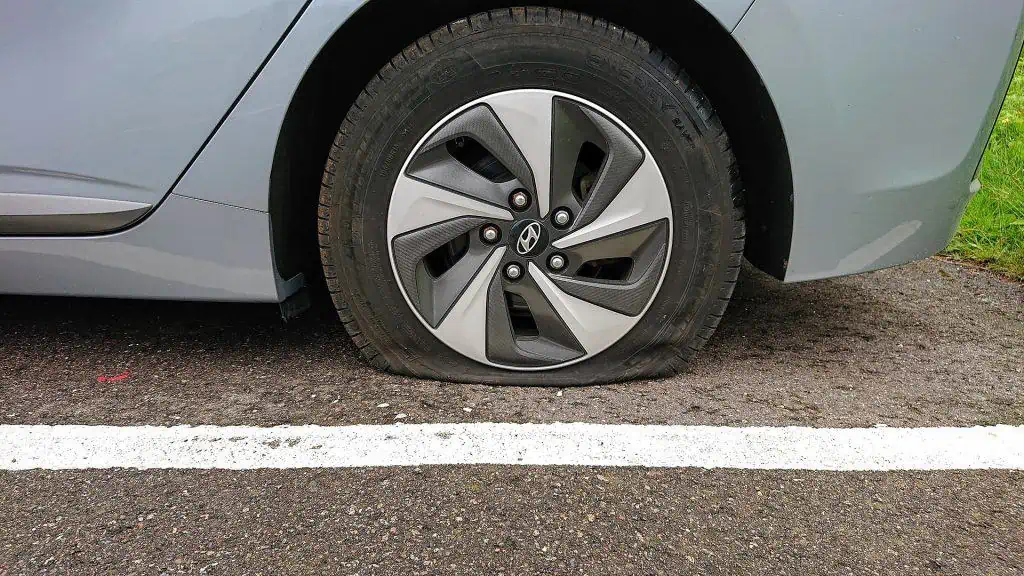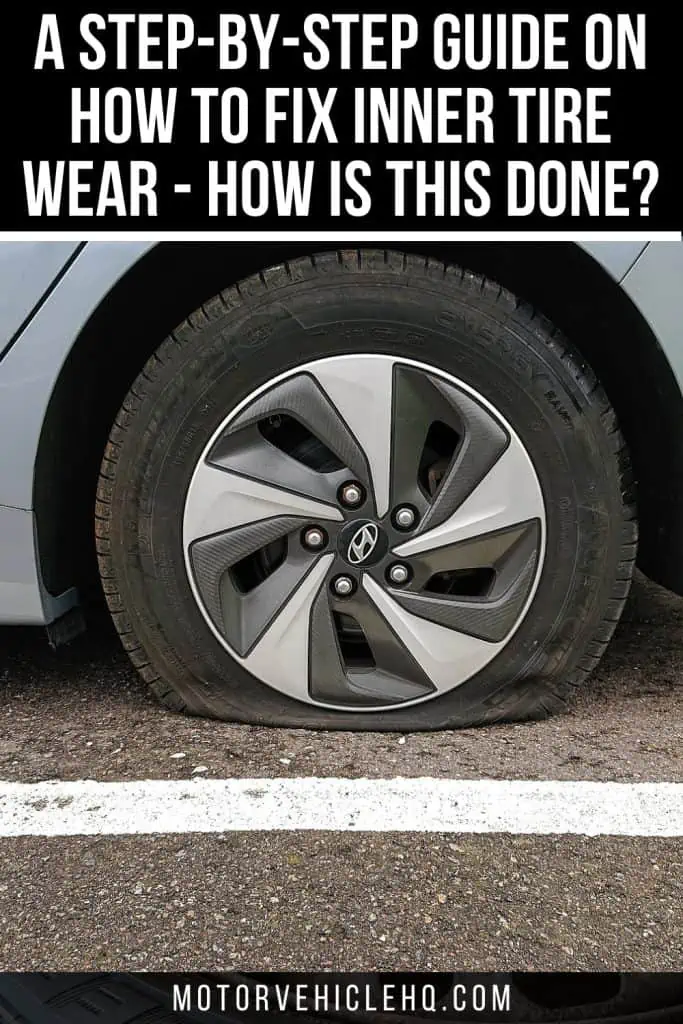It never ceases to amaze me how frequently we neglect the routine care and upkeep of our tires. We haven’t been paying much attention to our tires, even though they are the very thing that keeps our automobiles firmly attached to the pavement.
Ensuring that they both move along smoothly and that we don’t simply slide around like we’re on roller skates. What should we do, for example, when the inner tires are wearing out?
Tires have developed considerably since they were first created. The rubber composite contains more than simply chemistry and science. Yet, tires are now more effective due to their actual design.
Furthermore, and maybe most importantly, newer tires are more predictable, something we take for granted these days. As a result, we are aware of their exact wear patterns, when to replace them, and how durable they are.
It is therefore safe to conclude that inner tire wear is abnormal. What if, though, you were to walk over to your automobile one morning, take a look, and discover that the inner portions of the tires are losing their tread far more quickly than the outer portions?
What’s causing what ought to be excessive inner tire wear in your tires? What else can you do to address this grave problem? Let’s try to find out, shall we?
Why Is It Important for Us to Understand Inner Tire Wear and Tread-Wear In General?
It may be helpful for us to comprehend how treadwear generally functions before we get into the specifics of inner tire wear. Tires are designed to make contact with and grip the road, as we all know.
Your automobile moves when you increase power, brake pressure, steering effort, and so on. Once this is accomplished, it can effectively generate traction on the ground below and transform your inputs into motion.
Like the battery or the brake pads, tires are one of those replaceable parts of your car. The rubber compound of the tires deteriorates when you continuously accelerate, halt, turn, or even just drive along.
This is an unintended consequence of all the traction you’re obtaining, and tire wear is a common occurrence. Not to mention the fact that the full weight of the car is placed on it.
Assorted new automotive road tires by HopsonRoad (Stephen Flanders) / CC BY-SA 4.0. There are numerous tire producers, and every one of them employs a unique mix of rubber compounds. While some of these tires are more effective than others, others are made for use on commercial vehicles. Every tire is designed to perform differently.
The tires can only last so long while guiding your vehicle through tight turns while maintaining control.
The manufacturer of your tires, the type of rubber it is, its age, how you drive it, and other factors will all affect how long they are expected to last. The tires should generally be replaced at least every six years, or every 25,000 to 50,000 miles.
How Do External Factors Affect the Wear of Your Tires and Participate In Inner Tire Wear?
Again, it’s challenging to get a universal estimate of how long car tires can endure. Some people recommend changing tires just every 5,000 miles.
Some claim that if you don’t use your tires frequently, they might easily last ten years. The best – and most responsible – period we can come up with is our earlier estimate of six years and 25,000 to 50,000 kilometers.
After all, there are a plethora of variables that influence how rapidly your tire wears. Furthermore, knowing these could help us understand why you might be suffering from inner tire wear.
The following are a few of the most typical elements that will eventually determine how quickly (or how long) your tires will last:
1. The Tires’ Make and Brand
There are many different tire manufacturers, and each one uses a distinctive combination of rubber compounds. Some of these tires are designed to be used on commercial vehicles, while others are more efficient. Each tire is made to function differently.
The rate of wear is also impacted by this. Some tires are built of a tougher compound of rubber and are designed to last longer. Compared to softer rubber, they are a little louder and a little uncomfortable, but they might last longer.
2. The Tires’ Positioning
To learn more about inner tire wear, we’ll investigate this topic in more detail later. Let’s focus on how the placement of the tires impacts their wear for the time being. Most people will typically discover that the front tires almost always deteriorate more quickly than the rear tires.
This is merely a result of the fact that the front tires must control both steering and the majority of braking. Even if you occasionally do burnouts, these two are enough to wear it down faster than your rear tires.
If you drive a front-wheel-drive vehicle, this amount of frontward wear is much worse. Your front tires will now need to exert additional force. Your front tires naturally deteriorate more quickly, which is why we perform routine tire rotations to switch them out for the newer tires at the back.
3. The Vehicle’s Weight and Load
As we previously mentioned, your tires serve a dual purpose in supporting the weight of your car. It cannot defy the laws of gravity after all. The overall mass of your car will therefore affect how rapidly your tires wear. The load on the rotation of the tires increases if your vehicle is heavier.
As a result, the wear accelerates. Your car’s inherent weight is simply one factor. Your tires will experience extra stress if you hitch onto trailers or move about a load of items, such as bulky furniture. Even if it’s only momentary, it can slow down wear.
4. The Tires’ Pressure
It is crucial that you consistently maintain the correct tire pressure levels. Make it a routine to periodically check the PSI (or kPa, depending on where you are from) of your tire. On the surface, performance and comfort can be impacted by the proper pressure.
Under the surface, though, it might also lessen wear. Your tires will deteriorate more quickly if they are under-inflated. As the PSI drops below acceptable levels, the tires sag more than they should and increase the amount of road surface.
Your car’s weight is supported by your tires in two different ways. It is unable to resist gravity’s laws after all. Hence, how quickly your tires wear will depend on the mass of your car. If your vehicle is heavier, there is more pressure on the tire rotation.
It has two outcomes. One reason is that a higher contact patch will produce more friction and raise tire temperatures. Second, because it hasn’t been fully inflated, the rubber compound is no longer taut; instead, it flexes and stretches loosely.
On the other hand, exerting too much pressure is also undesirable. Your tires’ surface area with the road will be reduced if you overinflate them. Because of the requirement to try to make up for all the lost traction, this smaller surface area wears out more quickly than the other areas.
5. Bad Driving Habits and Speeds
I think it’s quite simple to understand that how we care for our cars will affect how quickly the tires wear down. For instance, driving at higher speeds will significantly raise the tire temperature. This could hasten tire wear. Your driving habits are important.
The rate of tire wear can be accelerated by violent cornering, power slides or drifts, burnouts, rapid and smokey acceleration, or forceful braking. You’ll quickly discover how durable tires can be if you drive more gently and moderately.
6. Improper Wheels and Tires Alignment
We’ll go into great depth later to discuss how inner tire wear manifests because alignment is a very complicated subject in and of itself. Essentially, it involves the technique of trying to realign the suspension and adjusting the balancing of the wheels and tires.
Simply defined, the sole purpose of an alignment method is to guarantee that the tires are true and straight with no signs of systemic crookedness. Increased tire wear is one of the adverse effects of poor alignment.
7. Using the Wrong Kind of Tires
As you may have already observed, tires vary according to the seasons. There are three basic tire types: all-season, winter, and summer rubber. Each one is designed to perform at its peak under various climatic or meteorological circumstances.
For example, summer tires only maximize your car’s performance when the conditions are dry or even a little bit damp. As it starts to snow, you can get better traction on icy or snowy roads by switching them out for winter tires. The best of all worlds is all the seasons.
You might not have realized that using the incorrect type of tire in the incorrect climate will hasten its wear. It is primarily due to their operating temperature and the chemical composition of the tires.
Winter tires, for example, are designed to maintain their flexibility and softness even in subfreezing weather. It’s not a good idea to use them when the weather is warm and sunny. Together with the increased heat, the softer, more stretchable rubber will also deteriorate more quickly, much like underinflated tires.
How Can Inner Tire Wear Be Detected?
After examining the common reasons for overall tire wear, it’s time to go deeper into the causes of inner tire wear. As we’ve already mentioned, this is unusual because tires are designed to wear uniformly across their whole width of rubber.
There may be problems with the system if the inside of the tire is showing more wear than the outside.
If you are unaware of this, you may notice it by the severe balding effect along the inner area of the tires, where it contacts the suspension components.
As you can see, this tread is shallower than the others. If the inner tire wear is still being developed, it may not even be noticeable. If you want to be positive, you can try running a few tests to determine if the issue is developing.
The average tread depth on US automobiles is 10/32″ or 11/32″. The matching tires for some other vehicles, such as those for heavy-duty trucks, SUVs, or winter tires, may have larger tread grooves. The US Department of Transportation (DoT) advises replacing your tires when the tread depth drops to less than 2/32″.
You can personally examine this if you notice anything is off. A few tread depth meters are available for little or free cost online. Some are very basic, using color codes to indicate the depth of the treads.
Others are more advanced and have a precise LCD readout. These are excellent items to keep on hand in the garage.
The amount of frontward wear is significantly worse if you operate a front-wheel-drive car. You will now need to apply more pressure to your front tires. Your front tires naturally wear down more quickly, therefore we rotate your tires regularly to replace the older front tires with the newer back tires.
Instead, you could do it for free using a penny; it would not be as exact, but it would be close enough.
A Penny Test to Determine Your Vehicle’s Treadwear
- Now, take a coin from your pocket and rotate it so that Abe Lincoln’s head is pointed into the treads of the tires.
- Now insert the penny into the treads of the tires, which are found in the space between their ribs. The elevated area of the tires that flanks the grooves are those “ribs.”
- Give the penny a little pressure, but not too much, so that it will fit inside.
- Check to see how far the penny has been inserted after that. Check to check if Lincoln’s head disappears between the ribs, to be more precise.
- Your tread depth is still at the safe (and legal) standard of 2/32 if the tip of his head is not visible, just below the hairline, around the middle of his forehead.
- Otherwise, you’re going to require a new pair of tires if you can see his entire head from the crown of his head to the tip of his hair.
- Don’t just examine one part of the tire while performing the penny test; search for the most worn-out spots as well. Even if the majority of the treads are OK, it is dangerous and against the law, if even one side of the treads is less than 2/32″.
What are the Main Causes of Inner Tire Wear?
You might be surprised to learn that one of the most frequent issues that people around the world have with their tires is excessive inner tire wear.
Many people have the same problems year after year, but they rarely identify the root cause of inner tire deterioration. Hence, if you’re having this problem, below are some typical reasons for inner tire wear:
1. A Bad or Excessive Camber Angle
The vertical lean of your car’s tires is measured in suspension jargon as camber. It’s possible to see one of two things with your car’s camber if you’re looking at this directly from the front or rear of the vehicle:
- A positive camber: Here, the top of the tire is inclined outward and away from the vehicle and protrudes further than the bottom.
- A negative camber: Here, the top of the tire is inclined inward into the vehicle and stands out further than the bottom.
Cars frequently have their camber adjusted, especially to improve handling or performance. For example, having the tires tilt inwards makes them more stable at greater speeds.
Having said that, changing the camber is not necessary for the majority of people out there. In a perfect world, the camber would be neutral, allowing the tires to rest flat on the ground with no lean.
If you haven’t done an alignment in a while, they may lean inadvertently. We can attribute the inner tire wear to negative camber.
After all, the inner zones of the tires will have the most touch with the ground as it bends inwards toward the top. Naturally, this part will exhaust itself much more quickly than the rest.
Wear bar and tread wear indicator on snow tire tread by VVVN / CC BY 3.0. Violent turning, power slides or drifts, burnouts, quick, smoky acceleration, or hard braking can all quicken the rate of tire wear. If you drive a little more carefully and sparingly, you’ll immediately see how resilient tires can be.
2. A Bad or Improper Toe Angle
Your car’s toe settings are another suspension-related issue that could lead to inner tire degradation. The toe, as opposed to the camber, describes the horizontal tilting of the tires concerning one another.
Let’s once more approach the front of the car and focus on the tire’s outermost edges. One of two things will be apparent:
- Toe-In: Here, the tires are positioned horizontally so that they are facing the inside of the vehicle and one another.
- Toe-Out: This is where both tires are horizontally inclined to point away from the vehicle and consequently from one another.
Toe angles can also be purposefully adjusted to alter the car’s agility and handling qualities. Although most individuals shouldn’t encounter this, if the toe hasn’t been calibrated in a while, it may become misaligned.
The toe angles should ideally be set such that the tires are always pointed straight forward, similar to how camber is set.
An excessive amount of toe-out could be the reason for inner tire deterioration. The tires in this situation are pointed away from the car, outward.
As a result, the tire’s inner parts are essentially being dragged along the pavement. The inner parts of the tire will wear out more quickly than the rest of them due to higher contact with the road surface.
3. Broken or Defective Ball Joints
The control arms are what attach the wheels to the body of the car as a component of the steering and suspension systems.
The ball joints, which assist in joining the lower and upper control arms to the steering knuckles, are sandwiched between those two. To eliminate any play or looseness in the ball joints as a whole, ball joints are typically built as “ball and socket” types.
This ensures that your wheels may continue to move as smoothly as possible. Yet if they aren’t updated, ball joints can break down from excessive wear and tear over time.
There will be some play in the wheels when it does fail. When that occurs, the wheels become loose and can move unintentionally, which alters the camber or toe angle that we previously discussed.
When it comes to ball joints, inner tire wear is usually caused by a failing or worn-out lower ball joint. They can produce quick changes and fiddle with the toe and camber angles as you drive by diminishing their grip on the wheels.
As a result, inner tire wear will start to become apparent. In addition, strange suspension noises and steering sensations may be audible over bumps.
4. Wearing or Defective Control Arm Bushings
Speaking of control arms, the control arm bushings could also be held accountable for inner tire wear. Control arms connect the steering knuckles and the vehicle’s chassis, thus we must be careful to take good care of them.
Both lower and upper control arms are present. At each of its respective pivot locations, both have rubber or elastomer bushings installed.
These bushings work to reduce the shock and vibrations that are often applied to the control arms. In addition, they lessen exposure to the outdoors and safeguard it from being struck by debris.
The bushings also assist in limiting the amount of free play in the control arms. These control arm bushings are susceptible to wearing down and failing over time, just like the ball joints.
A tire repair shop in Niger by NigerTZai / CC BY-SA 4.0. If your suspension is to blame for the wear on your inner tires, the repairs will be very pricey. It costs at least $350 to replace a new set of control arms or ball joints. It includes labor and supplies for a quartet.
Free play will eventually infiltrate the control arms as they weaken. Your camber or toe settings may now start to jiggle once again. This play will quickly wear out your tire treads as you drive, especially along the inner areas.
Also, if the suspension is working hard, you can hear or feel some strange noises or vibrations coming from the steering wheel.
How Much Would It Cost to Fix Inner Tire Wear and How Can You Do It?
You must be interested in trying to remedy it now that you know what’s causing inner tire wear, don’t you? The good news is that barring the need to replace your tires, this repair may not be too pricey.
Simply submit it to the neighborhood workshop for alignment if you discover that the camber and toe angles are out of place.
You can usually get away with a straightforward two-wheel alignment, which should cost you between $50 and $75. Even Walmart offers these services, and they do so quite well!
We would advise a complete four-wheel alignment for all-wheel-drive or four-wheel-drive vehicles. This should increase the cost by, on average, $100 to $150. You should ideally have an alignment performed once a year or every 5,000 miles.
If the wear on your inner tires is caused by your suspension, the repairs will be very expensive. For instance, replacing a new set of control arms or ball joints will put you back at least $350. It includes labor and parts for a set of four.
Replace the ball joints and control arms in all four corners, though, and may run you close to $2,000, depending on how your car is configured.
But, you might get less expensive DIY rebuild kits for $400 or less. If other significant suspension components malfunction, these may also result in inner tire degradation.
For instance, damaged shocks and struts may allow the wheels to droop so low that they dragged on the tire’s interior. At the very least, a complete set of four shocks and struts might cost you between $200 and $1,500.
Understanding Inner Tire Wear and Repairing It
- Given that a car’s four pieces of rubber connect it to the road, tires are essential to a vehicle’s performance and safety.
- Negative camber, worn tie rods, misaligned wheels, poor toe settings, worn ball joints, underinflated tires, and damaged shocks and struts can all contribute to inner tire degradation.
- Wheel alignment, tire inflation, routine wheel balance, and suspension component inspection may all be required to address inner tire deterioration.
- It’s crucial to rotate tires every six months to prolong their lifespan.
- Before investing in a new set of tires, a professional inspection is advised because the issue can call for specialist tools to repair.
- Uneven tire wear is dangerous and raises the possibility of tire blowouts.
- Although most states require tires to have 2/32 of an inch of tread, this depth should not be driven on regardless of the law.
- Depending on the cause, the price to repair inner tire degradation might range from $60 to more than $2,000.
A tire bubble by Osnetwork / CC BY-SA 3.0. An alignment technique’s main goal is to ensure that the tires are true and straight and show no evidence of structural crookedness. One of the negative implications of incorrect alignment is more tire wear.
- It is vital to inspect all tire-related parts and measurements as well as to look for damage to identify the source of inner tire wear.
- Repairing problems with inner tire wear is advised, especially if the problem is challenging to identify.
Is It Risky to Drive on Tires That Are Worn Out?
Although they are one of the most neglected parts of your car, tires are also one of the most important ones. Driving on old tires is extremely dangerous because they have little to no tread or none at all.
For the tire to get a hold of the pavement and give you vehicle stability and control, a tire tread is necessary.
Most people overlook their tires until it is too late. An accident doesn’t need to happen in the rain or snow.
You may be traveling down the highway on a lovely day when you suddenly find yourself in need of applying the brakes quickly. If your tires are worn, your stopping distance will substantially increase.
Tips for Tire Maintenance to Prevent Inner Tire Wear
Always check your alignment after striking something hard with your front wheels, such as an open manhole or anything else that has seriously jolted the wheel system, at least once a year.
1. Keep the Right Tire Air Pressure
Uneven tire wear results from either an overinflated or underinflated tire. Look inside the door for a sticker that lists the recommended tire pressure provided by the manufacturer.
This label is also visible inside the car on the console, gasoline flap, or trunk lid. The suggested pressure range for most passenger cars is between 30 and 35 PSI.
2. Always Adhere to Tire Rotation
The wear on your tires’ tread can be evened out by rotating your tires. Tire wear and tear on front-wheel drive automobiles is much more than on rear-wheel drive vehicles.
We also turn left a little quicker than right on average. By rotating your tires, you can avoid replacing your front tires before you need to replace your back tires.
3. Check to See If the Tires on Your Vehicle are Balanced
Make sure your wheels are correctly balanced. It will guarantee a comfortable ride and even tire tread wear.
4. Visually Examine the State of Your Tires
The best way to prevent internal tire wear is to perform visual inspections once a month. As you park your automobile on flat ground, look to see if your tires are cambered. Moreover, check the tires to see how they are wearing.
5. Go to a Mechanic to Have Your Car Fixed
It is best to take it to a professional if you observe any inner tire wear. This enables the mechanic to inspect your suspension and identify any issues. The mechanic will inspect the control and trailing arms for any missing parts or damaged bushings.
A flat tire on a passenger car by Stian Martinsen / CC BY-SA 4.0. You must continually keep the recommended tire pressure levels. Make it a habit to check your tire’s PSI (or kPa, depending on where you are from) regularly. The right pressure can, on the surface, affect comfort and performance.
The Conclusion
The overall quiet killer is inner tire deterioration. Some individuals can miss it until it’s too late. This seemingly insignificant wear might affect your braking efficiency, especially on wet or icy roads when there are less effective treads to deal with.
Accidents are certain to occur when there is less traction and increased slippage. Heat may accumulate when the tread wears down, and when combined with tire deterioration, it could result in blowouts.
Even if you don’t mind the increased danger, it can have an impact elsewhere. You’ll notice a decrease in performance on worn treads, both in straight-line speed and in curves.
Uncomfortability and a rise in fuel consumption are to be expected. Hence, whenever you see inner tire wear, it’s crucial to have your tires examined. One cent could potentially save your life.
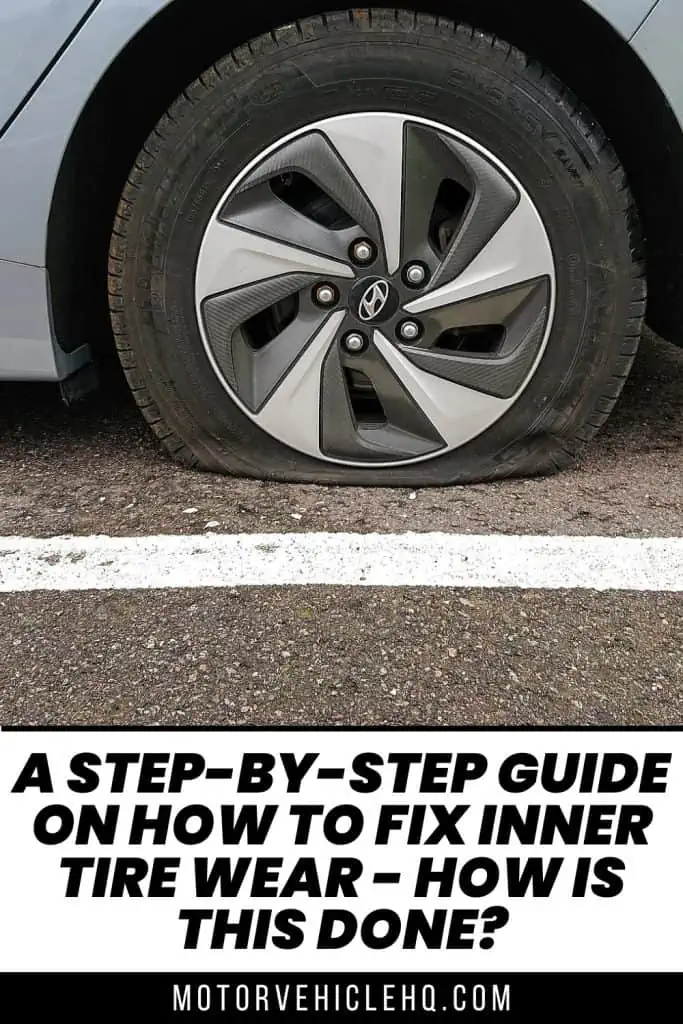
A flat tire on a passenger car by Stian Martinsen / CC BY-SA 4.0

Jim Wicks is the founder of MotorVehicleHQ. With over two decades of experience in the automotive industry and a degree in Automotive Technology, Jim is a certified car expert who has worked in various roles ranging from a mechanic, car dealership manager, to a racing car driver. He has owned more than 20 cars over the past 15 years. Ask him about any vehicle you see on the road and he can tell you the make, model and year. He loves the aesthetics of all things cars, and keeps his vehicles in pristine condition.
In his free time, Jim enjoys getting his hands dirty under the hood of a classic car or taking long drives along the country roads. His favorite car? A 1967 Shelby GT500, a true classic that, according to Jim, “represents the pure essence of American muscle.”
